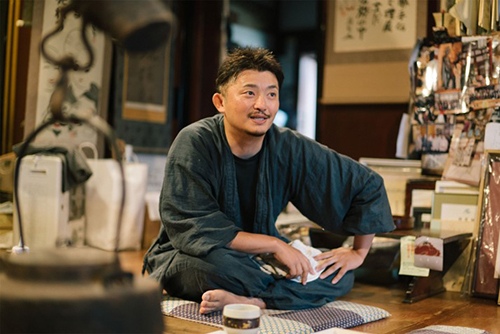“Kutani” Ware’s New Look By Kazuyoshi Kitamura
The highly acclaimed Japanese porcelain “Kutani” ware originated from Kaga, Ishikawa, during the early Edo period of Japan around the 1650s. The “Kutani” ware became famous because of its pure white base color. On top of the base, artisans would paint vibrant colors (usually five colors: green, blue, yellow, purple, and red) with intricate designs. Some of the finest Japanese porcelains are “Kutani” wares. Hence, for centuries, the refined “Kutani” ware has been favored and sought after by the royalties.
Fast forward to the current time; Kazuyoshi Kitamura, one of the best artists in Japan and a second-generation “Kutani” ware artist, has revolutionized the traditional “Kutani” ware look. With solid training in making traditional “Kutani” ware from his family’s own kiln, Kitamura began to add new motifs and styles so the porcelain could broaden its reach beyond just the “elite”. His approach has won popularity among various generations of Japanese and consequently has revived interest in “Kutani” ware.
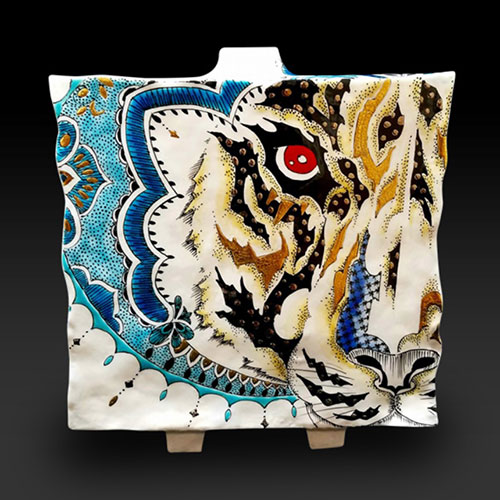
We were fortunate to get hold of Kazuyoshi to learn more about “Kutani” ware and his approach. We have noted how he seamlessly and creatively makes the transition from the traditional to the modern. We hope you enjoy reading the following.
Q: You are a second-generation “Kutani” ware maker. Please tell us the history of “Kutani” ware which is so highly regarded in the Japanese culture.
A: Since 1655, “Kutani-yaki” (“Kutani” ware) has been made from porcelain clay produced in Ishikawa Prefecture (Japan) and painted with five different colors of glaze called “Kutani Gosai”.
“Kutani-yaki” ware is highly regarded for its individuality and identity and is one of the most popular traditional ceramics in modern Japan. “Kutani-yaki” is a very popular traditional craft that has been highly evaluated.
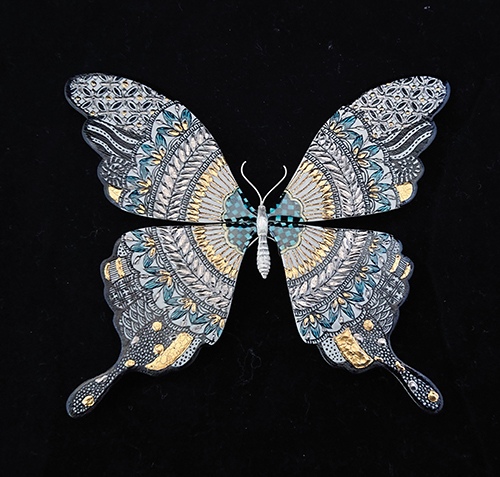
Q: What makes “Kutani” ware unique: materials, craftsmanship, techniques?
A: The porcelain clay produced in Ishikawa is fired at 1270 degrees celsius, and then painted with raised glassy paints made by mixing quartz powder, etc. with copper, manganese, and cobalt. The porcelain is then painted with gold. In addition, there are various techniques such as gilding with gold leaf or painting with fine patterns.
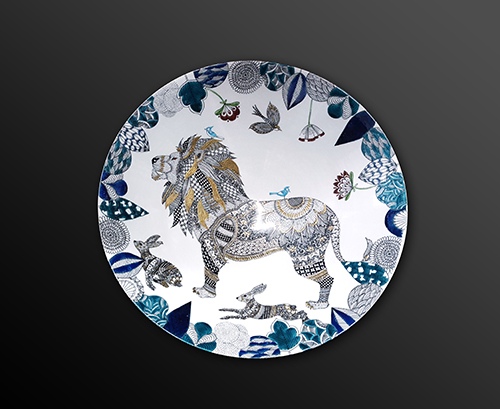
Q: Please tell us about the path you took that led you to become the preeminent craftsman of “Kutani” ware.
A: My father seemed to enjoy making “Kutani-yaki”, so I naturally entered this world.
At the age of 23, I joined the Kutani-yaki Taketakagama kiln, which is also my home, and began to work as a potter.
I myself like to draw pictures, and I use a technique of connecting living things with traditional patterns like a patchwork to create my works.
I think it is important not only to create artworks but also to connect with new people who are interested in our artworks.
I have collaborated with various businesses from apparel to toy companies, such as Uniqlo, Bandai, Tomy, and Regal.
I also have solo exhibitions all over Japan.

Q: What types of motifs do you gravitate towards when making your porcelain pieces and why?
A: I like to create a work of art that gives a sense of story from a single piece. So I often use living things such as plants or animals as motifs.
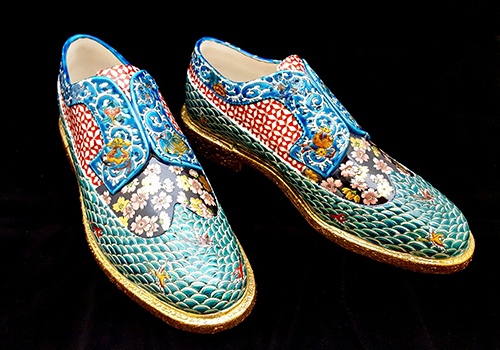
Q: How do you innovate in an ancient tradition that is highly valued and makes a connection with the modern world?
A: Rather than just copying, I use my own techniques to create things that fit into modern life scenes. I often create things that I would actually like to display or use, such as the “Kutani-yaki” insect series that would look good in a Western-style room, or lions and owls series combined with traditional patterns.
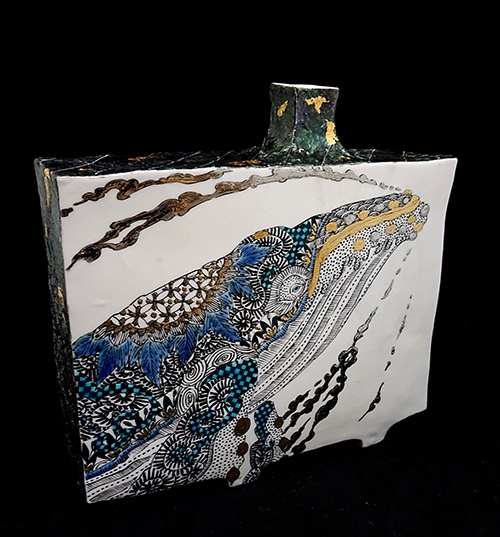
Q: In your opinion, what does it take to be good at making “Kutani” ware?
A: I think the most important thing is to actually come to Ishikawa Prefecture and see a lot of “Kutani-yaki” ware in museums and kilns.
Q: Where can people view your artwork in person?
A: “Kutani-yaki Taketaka Kiln”, which is also my home, and “Cerabo Kutani” in Komatsu City. I also have solo exhibitions all over the country, so I’m sure you will be able to visit me at my solo exhibitions.
